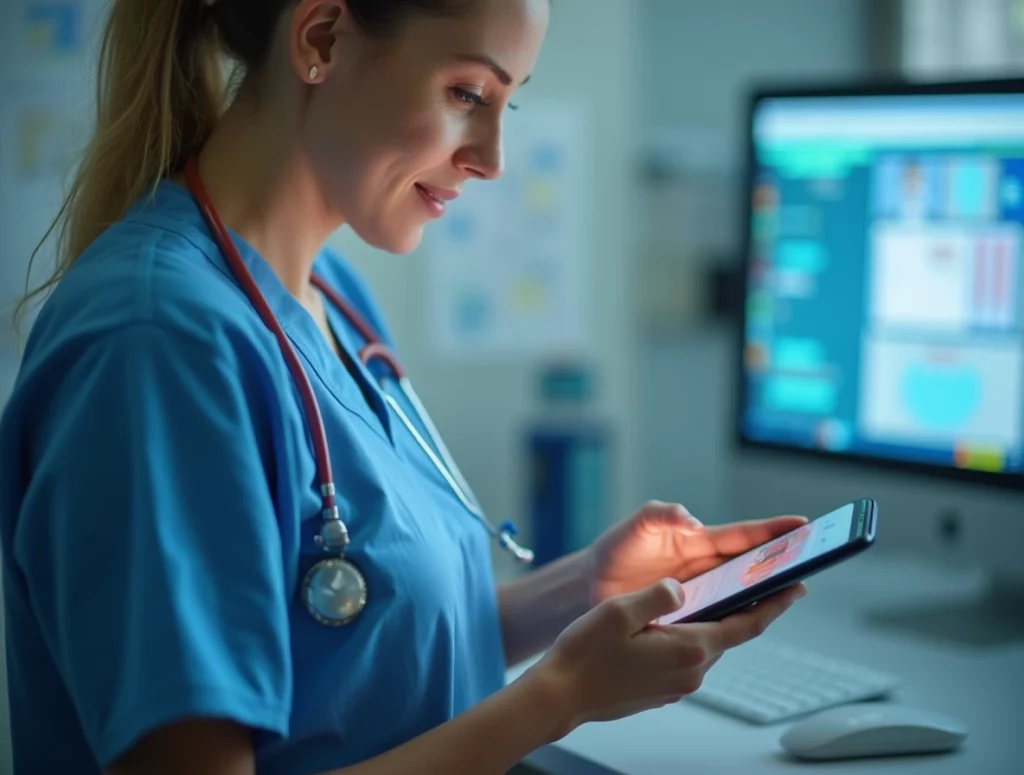The landscape of diabetes care is undergoing a profound transformation, fueled by a wave of technological innovations. These advancements promise to empower both patients and healthcare professionals in managing this chronic condition. For nurses, staying abreast of these developments is crucial to providing the best possible care for individuals living with diabetes.

Continuous Glucose Monitoring (CGM): A Paradigm Shift in Diabetes Management
Continuous Glucose Monitoring (CGM) has emerged as a game-changer in diabetes management. Unlike traditional finger-prick tests that provide only a snapshot of blood sugar levels, CGM systems offer continuous, real-time data. This technology utilizes a small sensor inserted under the skin, typically on the abdomen or arm, to measure glucose levels in the interstitial fluid. The sensor transmits readings to a receiver, such as a dedicated monitor or a smartphone, at regular intervals, usually every few minutes.
Benefits of CGM
The advantages of CGM extend beyond convenience. This technology provides:
- Improved Glycemic Management: Real-time data allows for proactive adjustments to diet, exercise, and medication, leading to tighter blood sugar control.
- Reduced Risk of Hypoglycemia: CGM systems can alert users to potential low blood sugar events, providing valuable time to take preventive measures.
- Enhanced Patient Autonomy: Access to real-time data empowers individuals to make informed decisions about their diabetes management, fostering self-care and independence.
Insulin Pumps and Automated Insulin Delivery Systems (AIDs): Towards Automated Diabetes Care
Insulin pumps have revolutionized insulin delivery for many individuals with diabetes. These small, wearable devices deliver insulin continuously throughout the day and night via a small, flexible tube inserted under the skin. Pumps offer a more precise and customizable alternative to traditional injections.
Automated Insulin Delivery Systems (AIDs), often referred to as “artificial pancreas” systems, represent a significant leap forward in diabetes technology. These systems combine CGM technology with insulin pumps to create a closed-loop system for insulin delivery. The CGM continuously monitors glucose levels and sends this data to the insulin pump. An algorithm within the pump then calculates and adjusts the insulin delivery rate automatically, mimicking the function of a healthy pancreas.
Benefits of Insulin Pumps and AIDs
- Precise Insulin Delivery: Pumps allow for fine-tuned insulin dosing, potentially improving blood sugar control.
- Reduced Burden of Management: AIDs automate insulin adjustments, freeing users from constant monitoring and manual adjustments.
- Improved Quality of Life: By automating insulin delivery, AIDs have the potential to significantly improve quality of life for individuals with diabetes.
Remote Monitoring and Telehealth: Bridging the Gap in Diabetes Care
The COVID-19 pandemic accelerated the adoption of telehealth services, including remote patient monitoring (RPM) for diabetes. RPM utilizes technology to collect and transmit health data from patients to their healthcare providers remotely. This data can include blood glucose readings, insulin doses, blood pressure, weight, and other relevant metrics.
Telehealth platforms facilitate virtual consultations, allowing healthcare providers to interact with their patients remotely. This is particularly beneficial for individuals who may have difficulty accessing regular in-person appointments due to factors like location, mobility, or time constraints.
Benefits of Remote Monitoring and Telehealth in Diabetes Care
- Improved Access to Care: Telehealth removes geographical barriers, connecting patients in remote or underserved areas with specialized diabetes care.
- Timely Interventions: RPM allows healthcare providers to monitor patients’ progress remotely and intervene promptly when necessary, potentially preventing complications.
- Increased Patient Engagement: The convenience of telehealth and the ability to track their health data remotely can empower patients to take a more active role in their diabetes management.
Wearable Technology and Diabetes Apps: Integrating Diabetes Management into Daily Life
Wearable technology, such as smartwatches and fitness trackers, is becoming increasingly popular. Many of these devices can now integrate with CGM systems, providing users with a comprehensive view of their health data in one place.
Diabetes-specific apps complement these devices, offering a wide range of functionalities. These apps often allow users to log meals, track carbohydrate intake, record medication adherence, monitor blood glucose levels, and access educational resources.
Benefits of Wearable Technology and Diabetes Apps
- Holistic Health Management: Integration with CGM and other health data provides a comprehensive picture of the user’s overall well-being.
- Personalized Insights: Many apps use data analysis to deliver personalized insights, recommendations, and reminders.
- Improved Self-Management: By centralizing health data and providing tools for tracking and analysis, these technologies empower individuals to take control of their diabetes management.
Future Trends in Diabetes Care: On the Horizon of Innovation
The field of diabetes technology is constantly evolving. Several promising trends are on the horizon, poised to further transform the way diabetes is managed in the future.
Closed-Loop Systems with Advanced Algorithms
Researchers are working on developing even more sophisticated closed-loop systems with advanced algorithms. These next-generation AIDs aim to improve upon existing technologies by further automating insulin delivery and minimizing the need for user intervention.
Artificial Intelligence and Machine Learning
The vast amounts of data generated by CGM systems and other diabetes technologies provide a rich source of information for analysis. Artificial intelligence (AI) and machine learning algorithms can be used to identify patterns, predict trends, and provide personalized recommendations for diabetes management.
Non-Invasive Glucose Monitoring
One of the long-sought goals in diabetes technology is the development of non-invasive methods for measuring blood glucose levels. This would eliminate the need for finger-prick tests or sensor insertions. Researchers are exploring various approaches, including optical sensors, sweat-based monitoring, and even breath analysis.
Conclusion
The digital age is ushering in a new era of diabetes care, characterized by personalized, proactive, and data-driven approaches. These technological advancements hold immense promise for improving the lives of individuals living with diabetes. For nurses, staying informed about these innovations is paramount to providing the best possible care for their patients.
Source: This article was created based on internal research and does not cite external sources.
